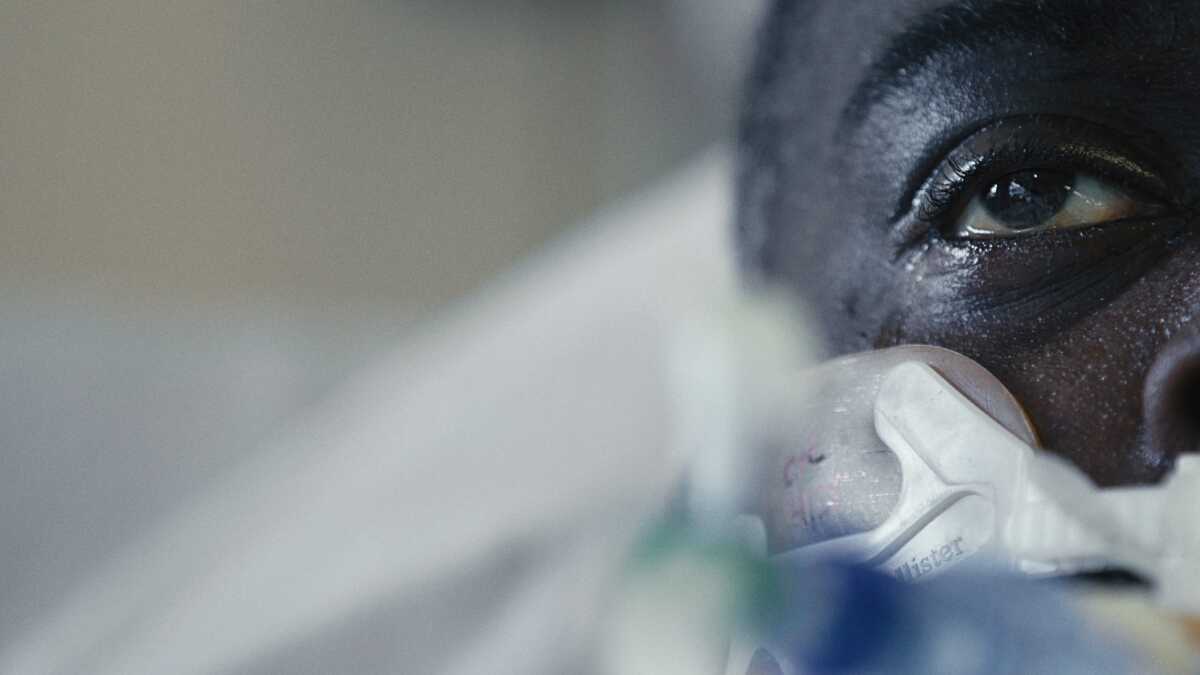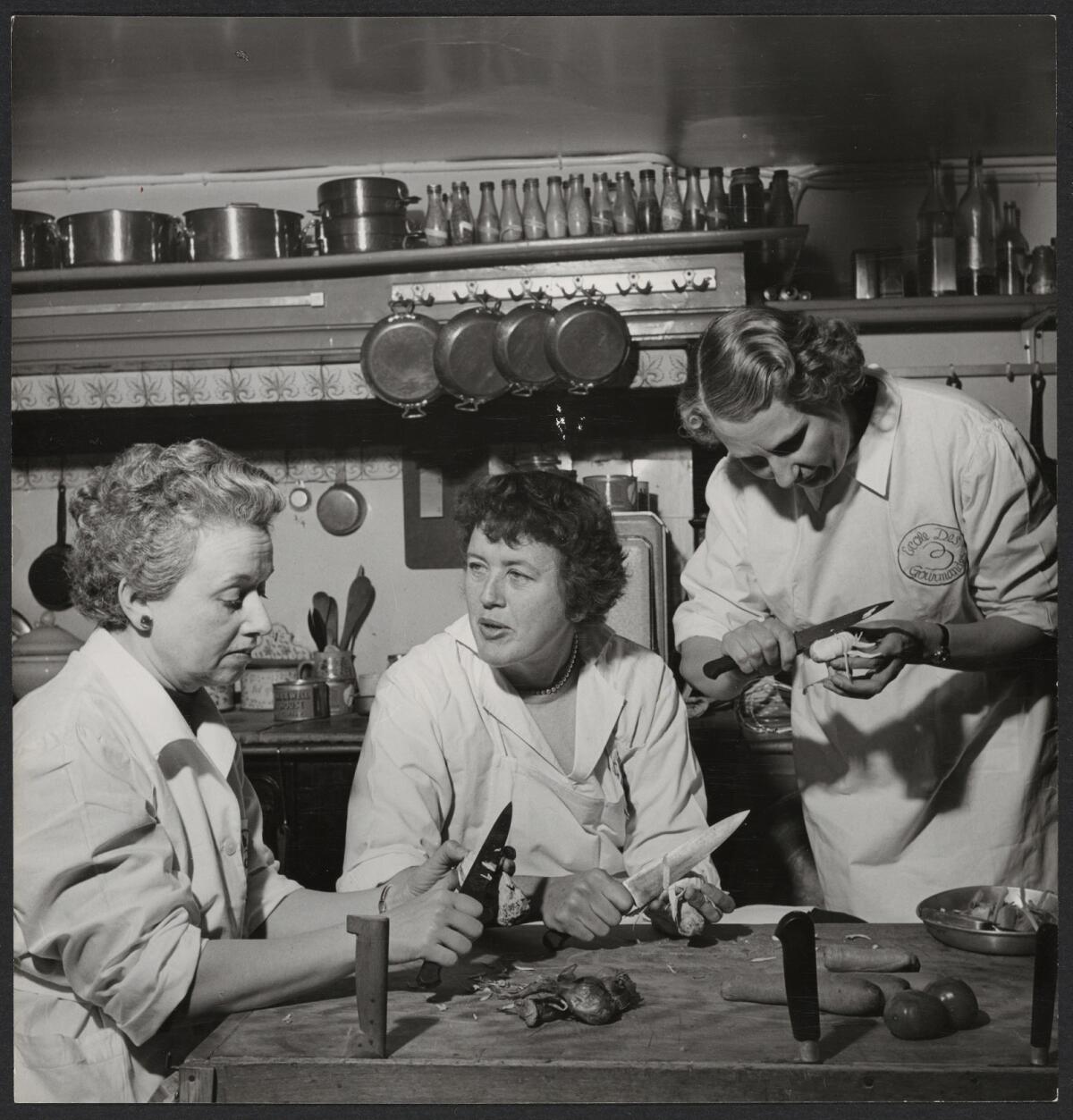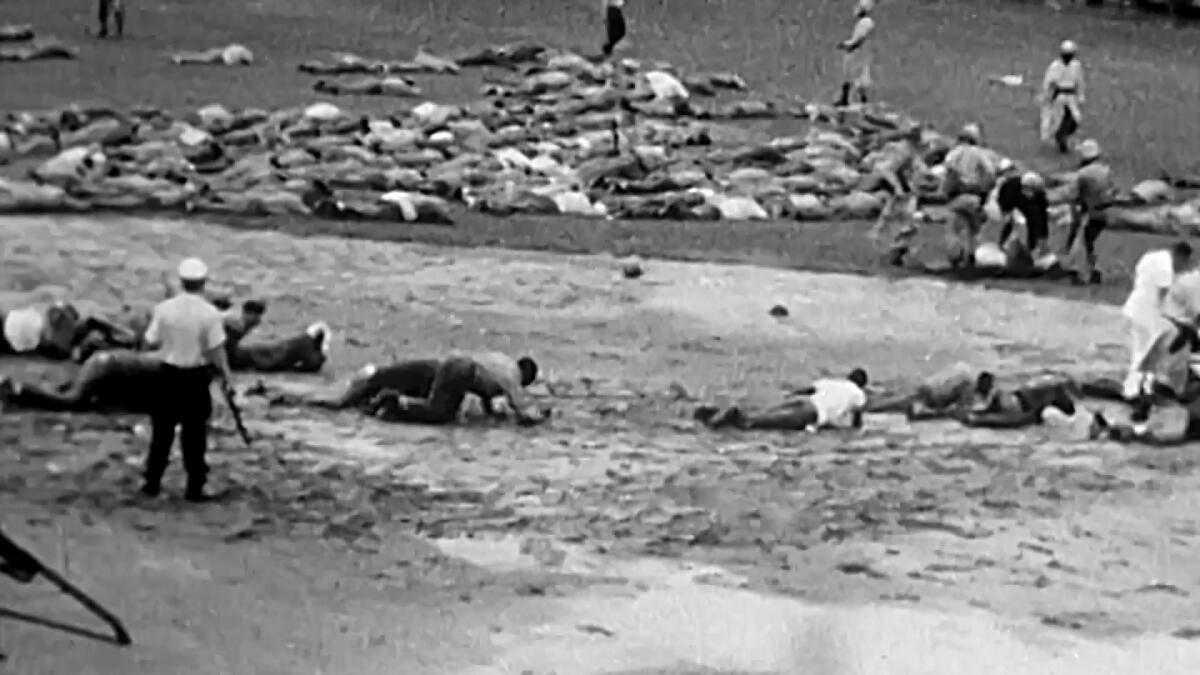Three documentaries: a deadly prison encounter, a famous chef and the current pandemic

Documentary features have become one of the most competitive categories at the Academy Awards. If the trend continues, entries in the running for the 2022 shortlist could exceed last year’s record of 238. Here are quick looks at three contenders vying for a spot on the list, which will be announced Dec. 21. The films explore the life of a groundbreaking chef and television personality, a deadly prison rebellion and the chaotic fight to save lives amid a world-changing pandemic.
‘Julia’

This has been a busy year for documentaries about singular cultural figures who also became television pioneers, with subjects including undersea explorer Jacques Cousteau and conductor-composer Leonard Bernstein. The most colorful, however, is Julia Child, whose public television show “The French Chef” first showed a Spam-happy 1960s America how to pronounce — and cook — boeuf bourguignon, among many other classic dishes.
In “Julia,” a Sony Pictures Classic release, filmmakers Julie Cohen and Betsy West, whose 2018 Ruth Bader Ginsburg doc “RBG” was nominated for an Academy Award, celebrate another revolutionary woman who broke with norms and changed her times. “She was tall, she was loud, she knew what she was talking about and she wasn’t afraid to talk about it,” Cohen said. “ From the minute she showed up on television, audiences just loved her for being her authentic self. She wasn’t young. This was a woman who was already 50 years old.”
Child, who died in 2004 at age 91, is renowned for co-authoring the 12-years-in-the-making cookbook “Mastering the Art of French Cooking” (1961). The filmmakers take time to map Child’s life before that turning point, sparked by her globe-hopping wartime romance with Paul Child, whom she met when they both worked for the Office of Strategic Services during World War II. Archival letters, diary entries and photographs bring passion to life, along with a score by English composer Rachel Portman. “If people choose to see our movie as a date movie, that’s good,” Cohen said.
Paul Child’s photography also was a boon, offering comic behind the scenes shots of the early TV productions as well as some surprisingly intimate glimpses. “We didn’t expect we would find a nude photo of Julia Child, but there it is,” West said, “along with a lot of other very sensual shots of a person who doesn’t automatically make you think she was a sex symbol. But to Paul Child she was.”
‘Attica’

Its release coinciding with the 50th anniversary of the 1971 uprising at the Attica Correctional Facility in upstate New York, “Attica” posed a chronological urgency to its filmmakers, Stanley Nelson and Traci Curry. “The people that were survivors of Attica, that had clear memories of being there, they were getting older,” said Nelson, a triple Emmy Award winner whose documentaries include “Freedom Riders” and “Black Panthers: Vanguard of the Revolution.” “It was a real push to get it done now to include them while they were still vibrant.”
Those subjects, who include not only the former prisoners but reporters, prison guards, observers, family members and residents of Attica village, are the heart of the film. “It became apparent early on this was going to be a story told by the people that experienced it,” said Curry, who conducted the interviews. After armed state police stormed into the prison on the order of New York Gov. Nelson Rockefeller, 43 people were killed — including prisoners, correctional officers and prison employees. “This is a profound trauma for everybody that experienced it, every single person. … There were a lot of tears, a lot of rage at the injustice of it on all sides.”
The Showtime film makes extensive use of television news footage, a reminder that the Attica uprising was a major media event, but digs deeper for often shocking imagery previously obscured and emotional firsthand accounts from John Johnson, an ABC News correspondent who was on the scene. “What happens with these films is people use the same film over and over again,” Nelson said. “We had to constantly go back [to archival sources] and say, ‘No, we want to see everything. We want to see every single thing that you’ve got.’”
‘The First Wave’

Danger zones are familiar turf to filmmaker Matthew Heineman, who has turned his camera to Mexican drug cartels (the Academy Award-nominated “Cartel Land”), the opioid crisis (“The Trade” docuseries) and Syrian journalists documenting ISIS atrocities (“City of Ghosts”). His latest film, made inside a hospital in Queens as the COVID-19 pandemic hammered New York City in 2020, proved more forbidding than any of his previous projects.
“This was by far the most terrifying thing I’ve made,” Heineman said, “because we were living the same thing we were documenting.” Embedded for months at the Long Island Jewish Medical Center, the filmmaker and his small crew shot for as many as 18 hours a day inside cramped, hectic spaces as health providers struggled desperately to get a grip on the deadly and mysterious virus.
“The First Wave,” a Neon theatrical release in partnership with National Geographic, joins a growing category of pandemic-themed documentaries, including “76 Days,” “In the Same Breath” and “Totally Under Control.” This vérité account, however, zeroes in on a handful of subjects, including impassioned physician Natalie Dougé and a New York Police Department school safety officer named Ahmed Ellis, a family man whose struggle for life becomes a rallying point..
Dougé, who becomes the film’s driving spirit, also opened the story into the broader social implications of the pandemic, which paralleled the most explosive moments of the Black Lives Matter protests. “She was so clearly able to articulate the fear of the moment but also was just opening herself up emotionally,” Heineman said. “We got quite close, and through that trust and through that bond we were able to explore a lot of other issues that emerged over these four months.”
More to Read
From the Oscars to the Emmys.
Get the Envelope newsletter for exclusive awards season coverage, behind-the-scenes stories from the Envelope podcast and columnist Glenn Whipp’s must-read analysis.
You may occasionally receive promotional content from the Los Angeles Times.







